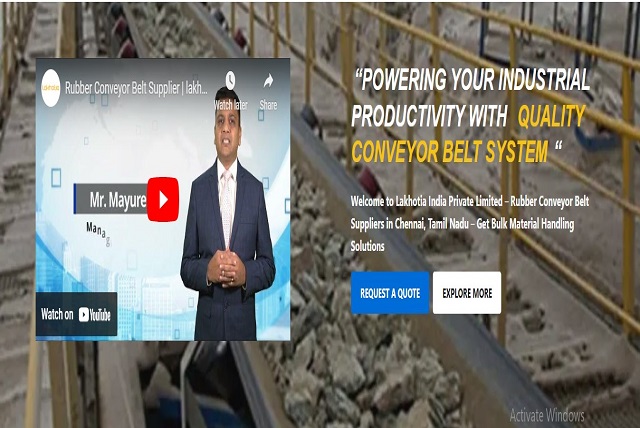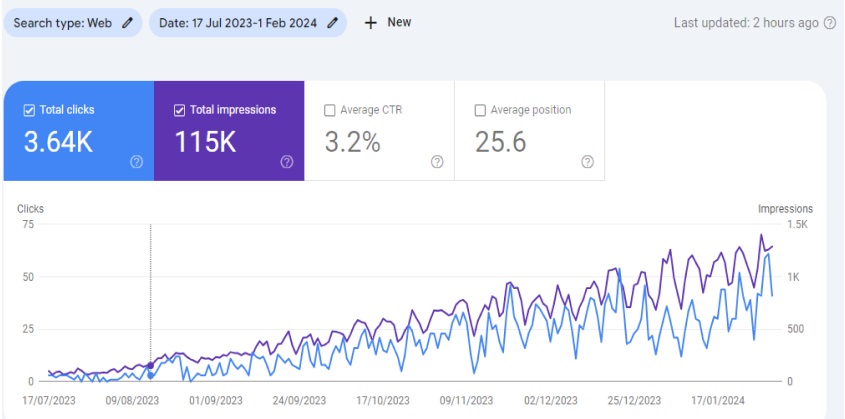How Lakhotia India Grew Organic Traffic by 220% in 6 Months
The traffic from targeted keywords has shown remarkable growth of about 220% in the past six months compared to the prior six months

Project Background
Lakhotia India is a well-known
source of industrial solutions. They focus on bulk products like rubber
conveyor belts, Bonfiglioli gearboxes, industrial geared motors, bucket
conveyor belts, and conveyor motor pulleys.
Challenges
The following problems had to be
solved in a planned and complex way in order for the lakhotia SEO strategy to
be successful in the competitive manufacturing and industrial sectors.
Competitors
Who Are Already Effective
A lot of well-known manufacturing companies with high EEAT (Expertise,
Authoritativeness, and Trustworthiness) and authority were already at the top
of the search results. It was very hard to compete with these big companies in
the same field.
Brand-new Website
The Industry website was fairly new and hadn't had any SEO work done on it yet.
To make sure long-term success, it took a lot of work and planning to build its
SEO base from scratch.
Competitive Niche
A lot of companies are competing for the same keywords and market share in the
manufacturing and industry areas. Because of this, I had to use unique tactics
to boost search rankings and exposure, which set the manufacturing industry
apart from its rivals.
Technical Challenges.
The website needed to be faster,
easier to use on mobile devices, and better overall user experience. A full technical
assessment was done to find and fix the issues that might be affecting SEO
performance.
Link Building in a Niche Industry
Acquiring high-quality backlinks from industry-relevant websites and
directories was challenging due to the niche nature of the manufacturing and
industrial sectors. I had to plan a targeted strategy to build links in order
to raise the domain authority of websites in the manufacturing business and
make them rank higher in search engines.
Balancing SEO with User Experience
It was crucial that the website worked well for both user and search engines.
We had to make sure that the site was not only search engine-friendly but also
interesting and easy for potential buyers to use by balancing technical SEO
changes with improvements to the user experience.
SEO Strategy
1.
Researching and using keywords
First, I looked for powerful keywords that were specific to the industry and
manufacturing areas. keywords that possible buyers were actually looking for
helped me a lot, like "industrial rubber conveyor belts,"
"Bonfiglioli gearbox suppliers," and "conveyor motor
pulleys." By focusing on these niche keywords, I hoped to get a very
appropriate audience. Used advanced tools and data to do thorough topic
research. Looked at the keyword strategies of rivals to find possibilities. Chose
high-impact keywords that are specific to the industry to improve the text of
our website.
2. Improvements to the on-page SEO
Optimizing the website's style and on-page elements was important for making it
easier for search engines to crawl and find. Worked on improving the site's
architecture, internal links, and meta tags so that search engines could
quickly understand and index the material. Meta title, descriptions, and
headers have been optimized to make sure they align with target keywords.
Better internal linking to set up a clear site structure and share link value.
Make sure all pages are easy for people to find and for search engine bots to crawl.
Created a variety of authoritative material to show the knowledge of the
manufacturing business and its new ideas. This included case studies, blogs,
and white papers that gave useful information about trends, problems, and
answers in the business.
3. Link Building
A big part of the SEO approach was getting high-quality backlinks from websites
and groups that were related to lakhotia India. A focused link-building
strategy was put in place to improve the manufacturing industry's search engine
results and raise its domain authority. The main goal was to get backlinks from
trustworthy sites that were very important to the manufacturing and industrial
sectors. Found influential people and bloggers in the field and contacted them
about guest writing possibilities. Submitted the website for the manufacturing
field to reputable company and industry sites. Engaged in strategic
partnerships and collaborations to earn high-quality backlinks.
4. Technical SEO
Fixing technical issues was necessary to make the site faster, easier to use on
mobile devices, and better for all users. Ali Noor did a full technical audit
to find and fix any problems that might be slowing down the manufacturing
industry's SEO. My goal was to make sure that people could have a smooth and
useful experience on all devices. Speeded up the site by reducing the size of
pictures, shortening code, and using browser caching. Made sure that the
website could be viewed on any device. Structured data was added to help search
engines understand it better and make rich snippets better.
Results
- The website for the manufacturing business got higher
search engine results for almost 25 high-impact keywords. This made it more
visible in the industrial and manufacturing sectors.
- There was a big rise in traffic from organic search results, which meant that
the site was seeing a more appropriate
audience.
- Better user engagement measures, such as longer session lengths and lower
bounce rates, show that the website is more interesting and easy to use.
- The focused SEO efforts brought in good leads, which helped the business grow
and get a better place in the market.

